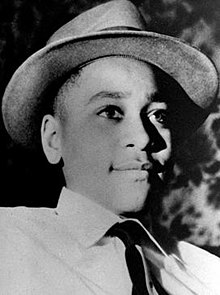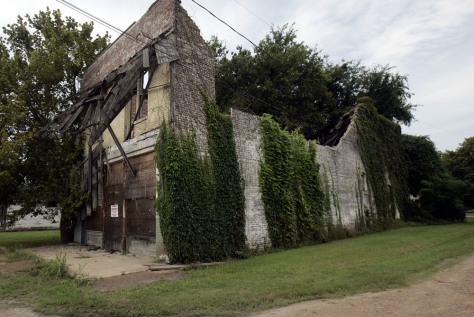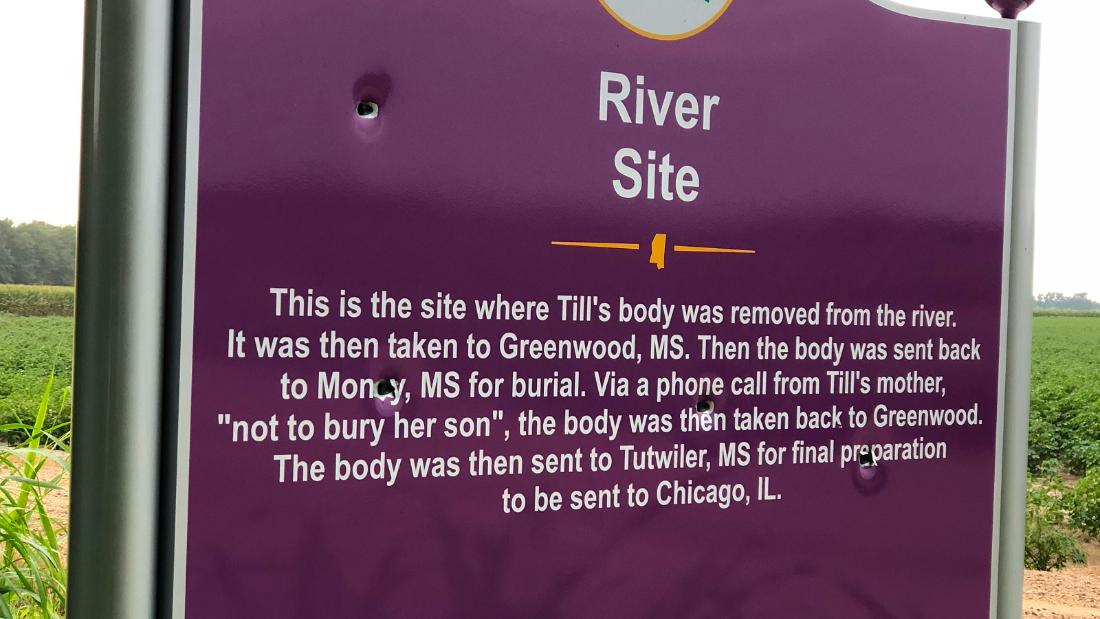Hello Everyone:
It is cool and crisp Monday afternoon which means time for a fresh week on the blog. On the weekly edition of The Forum, we will chat about the collapse of Hanoi Summit and Michael Cohen's testimony before the House of Representatives Oversight Committee. Yours Truly got momentarily delayed by an M.I.A. piece of jewelry. Fortunately, the jewel and Blogger have been reunited. Distraction aside, shall we talk about problematic history?
History is never just about the happy victorious events or heroic individuals. Sometimes, history is about the dark events or people who commit heinous acts. The southern United States is no stranger to heinous events and people. One of those events was the murder of 14-year-old Emmett Till.
 |
| Emmett Till en.wikipedia.org |
| Bryant's Grocery and Meat Market Money, Mississippi fsu.digital.flvc.org |
The horrific murder of Emmett Till is memorialized as one of the most hideous hate crimes of the 20th century. So brutal was this act, that it helped fuel the civil rights movement. The store where it all began remains, barely.
Today, the store stands neglected. The store is falling apart, roofless, and overgrown with weeds. On a number of occasions, preservationists, politicians, and business leaders have tried to save the remaining wall. However, no consensus on what to do with deteriorating store.
Some of Money's residents consider the store a blotch on the community that should wipe out of existence. Others would like to see Bryant's restored as a memorial to Emmett Till, a reminder of the hate that killed him.
 |
| Bryant's Grocery and Meat Market today nbcnews.com |
Consider this, the store continues to fall apart amid increasing cultural and racial debate over the fate of Confederate monuments. The question here is, as monuments in the cities of Baltimore and New Orleans have come down, do we demolish this store, restore it, or something else? At the heart of this question is how do we, as a nation, acknowledge the dark moments in our past?
The Reverend Wheeler Parker, a pastor in suburban Chicago and a cousin of Emmett Till, told The New York Times,
It's part of this bigger story, part of a history that we can learn from.... The store should be be one of the places we share Emmett's story. (nytimes.com; Feb. 20, 2019; date accessed Mar. 4, 2019)
Rev. Parker went with Mr. Till to Bryant's Grocery that day. Times reporters Audra D.S. Burch, Veda Shastri, and Tim Chaffee note that last year the Department of Justice reopened the case after Carolyn Bryant Donham recanted parts of her story (Ibid).
 |
| Emmett Till memorial plaque cnn.com |
The memory continues to haunt the Mississippi Delta. The cotton gin that housed the 75-pound fan lashed to Mr. Till's neck with barbed wire was stolen but now is a museum. There are casual tours of the abandoned bridge, believed to be the place where his body was thrown into the Tallahatchie River. The barn where he was beaten to death is unmarked but the owner does allow an occasional visitor (Ibid). Emmett Till's story will be the subject of upcoming movies and books. Unfortunately, not everyone approves of memorials in the same way. Memorial plaques have been vandalized, shot at, and replaces.
To foster reconciliation in the Delta, the Emmett Till Memorial Commission was established in 2006. The Commission restored the courtroom in Sumner where Emmett Till's killers--store owner Roy Bryant and J.W. Milam--were acquitted. Outside the courthouse, a plaque dedicated to Mr. Till stands a short distance from a Confederate monument.
Ray Tribble, a member of the jury that acquitted the pair, bought the grocery store in the eighties. He passed away in 1998 and the store has remained in the Tribble family. The family refuses to restore or sell the property.
The story of Emmett Till served as cautionary tale for African American children in the Delta. Willie Williams, who is African American, told reporters that his parents told him the story as a way of being careful (Ibid). Donna Spell, who is white, added that Mr. Till's horrific death was not a story my parents would have told their children (Ibid). They met in church and serve on the Commission. Ms. Spell continued,
I did a lot of listening. And what I heard was a lot of pain,... To move forward we've got to tell the story. We've got to tear off the scab and keep telling it. (Ibid)
In 2007, The Emmett Till Memorial Commission presented the Till family an official apology in the courthouse where he was tried.
Money, Mississippi has been running from its history ever since that fateful day. Patrick Weems, the co-founder of the Commission told The Times, Our community had been running form this since 1955,... (Ibid). The Commission has placed 11 historical plaques at sites connected to Mr. Till's murder, only to replace them a number of times because they been shot or vandalized. Vandals even scraped off the text off the Bryant' Grocery plaque. Mr. Weems concedes,
It's been a struggle to keep those signs up,... but we think it's part of the front line of this tug of war between memory and how we negotiate our past and future. (Ibid)
Susan Glisson, the former director of the University of Mississippi's William Winter Institute for Racial Reconciliation and founder of Sustainable Equity a consulting firm dedicated to facilitating racial dialogue in universities, corporations, and cities, told The Times reporters,
When it works, we are able to get past the perspective of I didn't do it, I don't know anybody that did it and find the ways to honor the victims. (Ibid)
When it does not work, the resistance is immediate: communities are divided, landmarks are neglected, and the history gets lost or forgotten. These tense moment have roiled across the United States as small towns come face-to-face with their racist legacies. Rosewood, Florida and Monroe, Georgia are two glaring examples of what happens when towns cannot get past "I didn't do it" and "I don't know anybody that did it" (Ibid).
The lack of desire to restore Bryant's Grocery is not the only obstacle, the price for restoration "...according to one Mississippi newspaper is $4 million, but it's hard to know more because the family has largely refused to talk publicly about it" (Ibid). In 2011, the Tribble family was awarded a $206,000 state civil rights grant to restore the gas station next to the store. There is talk around town of replicating the store on state property across from the original site by one of the production companies filming a movie about Emmett Till. That may be only remedy. However, the Tribble family has remained silent about the fate of Bryant's Grocery, although Ray Tribble's son, Harold Ray Jr., told The Clarion Ledger in 2007,
We want to restore it,... It's a part of history and it's a part of history and it's about to fall down (Ibid)
As the store ebbs closer to oblivion, the fate of Bryant's Grocery remains in flux. Although, the Tribble family did express interest in rebuilding it, the store remains a ruin. A ruin that nature could not destroy. Perhaps this is its greatest testament. A metaphor for the story of Emmett Till, the men and women who went before him, long neglected but refusing to be consigned to the ash heap of history. That could the greatest memorial of all.
No comments:
Post a Comment